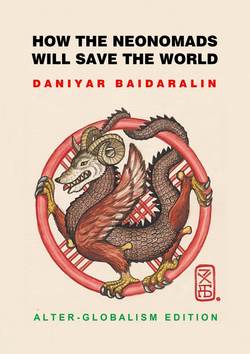Читать книгу How the Neonomads will save the world. Alter-globalism edition - Daniyar Z Baidaralin - Страница 5
THE CONCEPT: EURASIAN NOMADIC CIVILIZATION
Economy
ОглавлениеCattle-breeding economy
In order to understand the nomadic civilization better, we need to first understand its economics. It’s fairly simple in the core: the cattle, mostly sheep, horses, and camels, and sometimes goats and cows, eat on wild grasses of the seasonal pastures. As the pastures run out of grass due to overgrazing and drying from seasonal temperature rises, the cattle is moved to next pastures that are still full of the fresh grass. This keeps cattle alive and multiplied in numbers by breeding.
The nomads basically simply follow their cattle herds, and make sure it happens in an organized manner. This closely mimics the great animal migrations in Africa, where millions of zebras, antelopes, and other animals move in the same manner chasing the seasonal pastures. But in the Great Steppe, this took a more structured, man-made form. The herdsmen watch after their cattle, defend them from wolves, cattle-thieves, and other dangers. They also ensure to pick the best routes with watering places, and ward off any possible threats, allowing the herds to roam in a relative comfort.
In exchange the cattle provides the herdsmen families with meat, fats, dairy, wool, leathers, bone, sinew, horns, hooves, and other valuable materials that sustain human lives and production, and feed the economy. The nomads were always careful in using their live wealth, and made sure that not a single fiber of wool goes to waste. The nomadic consumption of cattle was 100% waste-free. Even the cattle dung was dried, stockpiled, and used as fuel to make fire.
Some of the EN always led semi-nomadic lifestyle in areas of the Great Steppe where such economics were possible. One of them being the region where I live – the Almaty Oblast, or Jetysu Region (the Seven Waters in Kazakh language). This region has high mountains and flat steppe right next to each other, creating a unique landscape. The mountain footings in the south of Almaty City allowed for agrarian economy, while the plains in the north were ideal for nomadic pastoralism; all within a few miles distance. Also there were pockets of fully-agrarian societies that lived among the Eurasian Nomads too.
The cattle was, of course, the main source of food. Meat was consumed regularly and by all nomads regardless of their social status; unlike that of the SC nations where meat was a privilege of the rich and powerful. The cattle also supplied the nomads with dairy products: most prominently the delicious fermented horse milk called qymyz and gourmet camel milk called shubat, along with many others. In Mongolia, where the local nomads traditionally have more cows, they make many types of dairy products from cow milk, such as airan, and a few types of milk alcoholic beverages.
This is the basic nomadic economy in a nutshell. It was not complicated in principle, but of course it required tons of expertise on a practical level. The nomads knew everything there is to know about their cattle, given the pre-Industrial technologies. They knew when to move to new pastures, best routes, watering holes, mating and breeding times, sicknesses and cures, as well as the best ways to shear, slaughter, and cut meat. The nomadic cuisine in a pure form contained mostly meat and dairy products, of which the nomads invented many delicious dishes. These dishes were enriched with either natural foods, such as plants, roots, fish, and etc., or with what the nomads could trade off with the SC nations: grains, vegetables, and etc. I write more about the nomadic traditional cuisine in Appendixes.
